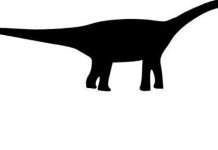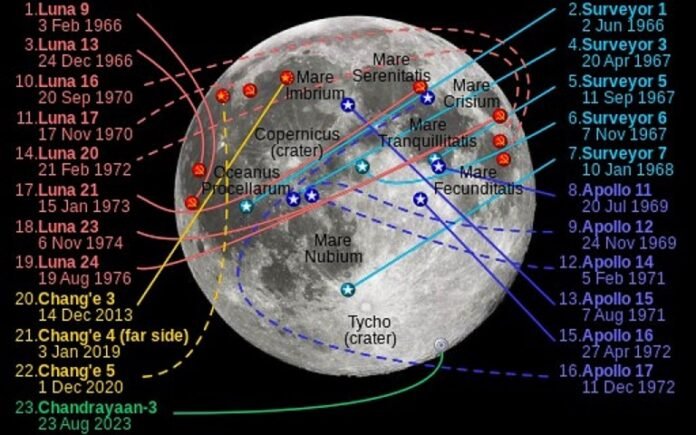Between 1958 and 1978, USA and former USSR sent 59 and 58 moon missions respectively. The lunar race between the two ceased in 1978. End of cold war and collapse of former Soviet Union and subsequent emergence of new multi-polar world order has seen renewed interests in moon missions. Now, in addition to the traditional rivals USA and Russia, many countries like Japan, China, India, UAE, Israel, ESA, Luxembourg and Italy have active lunar programmes. USA dominates the field. Of the new entrants, China and India have made significant inroads and have ambitious lunar programmes in collaboration with partners. NASA’s Artemis mission aims to re-establish human presence on moon and set up lunar basecamp/infrastructure in near future. China and India also have similar plans. Renewed interests in moon missions by many countries is driven by utilisation of lunar minerals, ice-water and space energy (particularly solar) for deep space human habitation and for supplementing energy needs of growing global economy. The strategic rivalry between the key players may culminate in space conflicts and weaponisation of space.
Since 1958 when the first moon mission Pioneer 0 was launched by the USA, there have been about 137 moon missions so far. Between 1958 and 1978, USA sent 59 missions to the moon while the former Soviet Union launched 58 moon missions, together accounting for over 85% of all lunar missions. It was termed as “lunar race” for superiority. The two countries successfully demonstrated key milestones of “lunar soft-landing” and “sample returns capabilities”. NASA went one step ahead and demonstrated “crewed landing capability” as well. USA remain the only country to have demonstrated maned moon mission capability.
After 1978, there was a lull for over a decade. No moon mission was sent, and the “lunar race” between USA and the former USSR ceased.
In 1990, lunar missions re-started with Japan’s MUSES programme. Presently, in addition to traditional rivals USA and Russia (as successor of former USSR which collapsed in 1991); Japan, China, India, UAE, Israel, ESA, Luxembourg and Italy have active lunar programmes. Of these, China and India have made particularly significant progress in their lunar programmes.
China’s lunar programme started in 2007 with launch of Chang’e 1. In 2013, Chang’e 3 mission demonstrated China’s soft-landing capability. China’s last lunar mission Chang’e 5 achieved “sample return capability” in 2020. Currently, China is in process of launching crewed moon mission. India’s lunar programme, on the other hand, began in 2008 with Chandrayaan 1. After a gap of 11 years, Chandrayaan 2 was launched in 2019 but this mission could not achieve lunar soft-landing capability. On 23rd August 2023, India’s lunar lander Vikram of Chandrayaan-3 mission safely soft landed at high latitude lunar surface on south pole. This was first lunar mission to land on moon’s south pole. With this, India became fourth country (after USA, Russia and China) to have lunar soft-landing capability.
Since 1990 when moon missions restarted, a total of 47 missions have been sent to the moon so far. This decade (i.e., 2020s) alone has already seen 19 moon missions. The key players have ambitious plans. NASA intends to build basecamp and related lunar infrastructure to re-establish human presence on moon in 2025 under Artemis program in collaboration with Canada, ESA and India. Russia is has announced to remain in lunar race following failure of her recent Luna 25 mission. China is to send crewed mission and has plans to establish a research station on the moon’s south pole by 2029 in collaboration with Russia. India’s Chandrayaan mission is considered as a steppingstone towards ISRO’s future interplanetary missions. Several other national space agencies are striving to achieve lunar milestones. Clearly, there is a renewed interest in moon missions hence the impression of “Lunar Race 2.0”
Why renewed interests of nations in moon missions?
Missions to moon are considered steppingstones towards interplanetary missions. Utilisation of lunar resources will be crucial in future colonisation of space (possibility of mass extinction in future due to natural disasters like volcanic eruption or asteroid impact or due to manmade conditions like climate change or nuclear or biological conflict could not be completely rules out. Spreading out into space to become a multi-planet species is an important long-term consideration before humanity. NASA’s Artemis program is one such beginning towards future colonisation of space). Deep space human habitation will very much depend on acquisition of ability to exploit extraterrestrial energy and mineral resources in the solar system to support and sustain crewed missions and space habitations1.
As the nearest celestial body, moon offers many advantages. It has variety of minerals and materials that can be used to produce propellants for space transportation, solar power facilities, industrial plants and structures for human habitations2. Water is very crucial for long-term human habitations in space. There is definitive evidence of water ice in the polar regions of moon3 that the future lunar bases can utilise to support human habitation. Water can also be used to produce rocket propellants locally on the moon which will make space exploration economical. In view of its low gravity, moon can serve as more efficient launching site for missions to Mars and other celestial bodies.
Moon also has huge potential of “space energy” (i.e., energy resources in outer space) that promises a way forward to the burgeoning energy needs of growing global economy (through supplementing conventional energy supplies on Earth) and the need of an outer space-based energy source for future space explorations. Because of lack of atmosphere and abundant supply of sunlight, moon is eminently suitable for setting up solar power stations independent of earth’s biosphere that would supply cheap and clean energy to global economy. Collectors on lunar surface can convert sunlight into microwave or laser which could be directed to the Earth-based receivers to convert into electricity4,5.
Successful space programmes emotionally bind citizens together, consolidate nationalism and have been sources of national pride and patriotism. Lunar and Martian missions have also served countries in seeking and regaining power status in the comity of nations particularly in the new multi-polar world order since the end of cold war and collapse of USSR. Chinese lunar programme is a case in point6.
Perhaps, one of key drivers of lunar race 2.0 is strategic rivalry between the United States and the ambitious China in the new world order. There are two main aspects of the rivalry: “crewed Mars missions along with lunar basecamps” and “weaponisation of space” resulting in development of space-based weapon/ defence systems7. The idea of common ownership of outer space is likely to be challenged by the Artemis moon mission8 pioneered by the USA and its international partner such as Canada, ESA and India. China also has planned a similar crewed mission and a research station on lunar south pole in collaboration with Russia. Interestingly, India’s Chandrayaan 3 recently soft landed on lunar south pole. There are indications of collaboration between India and Japan for future lunar missions.
The strategic rivalry between the key players coupled with accumulating tensions over other factors (such as China’s border disputes with India, Japan, Taiwan and other countries) has the potential to precipitate space conflicts and weaponisation of outer space. Space technology has dual-use nature and can be used as space weapons. Laser weaponization of space systems9 would particularly be disturbing to international peace and harmony.
***
References:
- Ambrose W.A., Reilly J.F., and Peters D.C., 2013. Energy Resources for Human Settlement in the Solar System and Earth’s Future in Space. DOI: https://doi.org/10.1306/M1011336
- Ambrose W.A. 2013. The Significance of Lunar Water Ice and Other Mineral Resources for Rocket Propellants and Human Settlement of the Moon. DOI: https://doi.org/10.1306/13361567M1013540
- Li S., et al 2018. Direct evidence of surface exposed water ice in the lunar polar regions. Earth, Atmospheric, and Planetary Sciences. August 20, 2018, 115 (36) 8907-8912. DOI: https://doi.org/10.1073/pnas.1802345115
- Criswell D.R. 2013. The Sun–Moon–Earth Solar–electric Power System to Enable Unlimited Human Prosperity. DOI: https://doi.org/10.1306/13361570M1013545 & Lunar Solar Power System DOI: https://doi.org/10.1109/45.489729
- Zhang T., et al 2021. Review on space energy. Applied Energy Volume 292, 15 June 2021, 116896. DOI: https://doi.org/10.1016/j.apenergy.2021.116896
- Lagerkvist J., 2023. Loyalty to the Nation: Lunar and Martian Exploration for Lasting Greatness. Published 22 August 2023. DOI: https://doi.org/10.1007/978-3-031-40037-7_4
- Zanidis T., 2023. The New Space Race: Between the Great Powers of our Era. Vol. 4 No. 1 (2023): HAPSc Policy Briefs Series. Published: Jun 29, 2023. DOI: https://doi.org/10.12681/hapscpbs.35187
- Hanssen, S.G.L. 2023. Aiming for the Moon: Exploring the Geopolitical Significance of the Artemis Program. UiT Munin. Available at https://hdl.handle.net/10037/29664
- Adkison, T.C.L. 2023. Laser Weaponization Technologies of Space Systems in Outer Space Warfare: A Qualitative Study. Colorado Technical University Dissertations. Available at https://www.proquest.com/openview/a982160c4a95f6683507078a7f3c946a/1?pq-origsite=gscholar&cbl=18750&diss=y
***




































